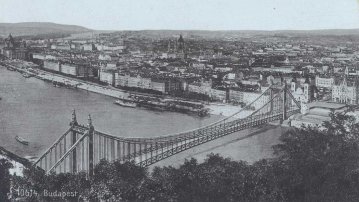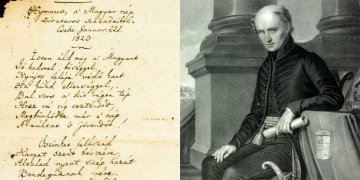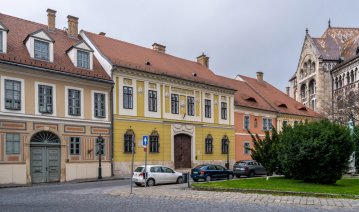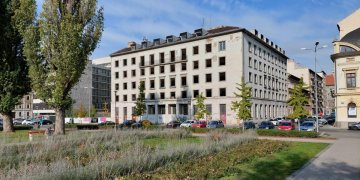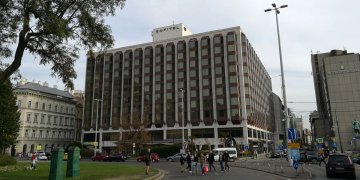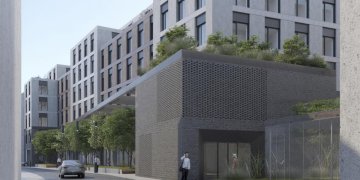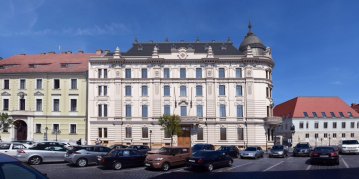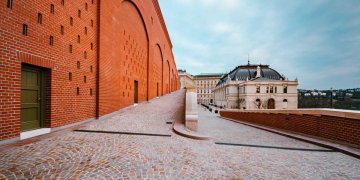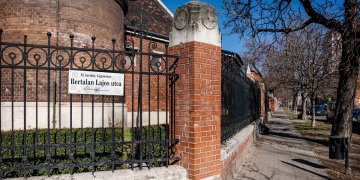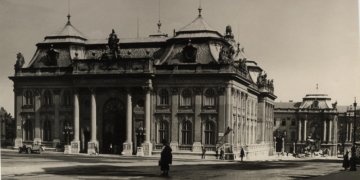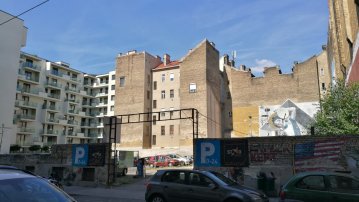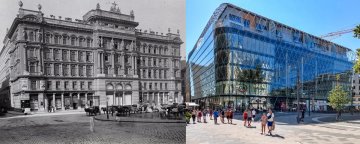Péter Bukovszki
Cikkek
In the footsteps of Petőfi: A walk around the sites of the Revolution of 15 March in Pest and Buda
March 15, 2023 at 11:00 AM
The sites of the Revolution of 15 March 1848 in Pest and Buda can still be visited today, and even some of the buildings that played an important role in the events are still there: standing in front of the National Museum, the Landerer and Heckenast Printing House, the Locotenential Council and the Táncsics-prison, anyone can recall the events.
Budapest then and today – 5 photos showing how much the city has changed
February 23, 2023 at 4:00 PM
The capital, which is 150 years old this year, has changed so much over time that every day citizens can marvel at a section of a street, an old building that has disappeared or that has miraculously survived. This time, with the help of five pairs of images, Pestbuda presents the passage of time from the houses of the old inner city of Pest to the flood in Tabán.
Stormy centuries: the lines of the 200-year-old National Anthem are still relevant today
January 22, 2023 at 2:00 PM
When Ferenc Kölcsey finalised the manuscript of the National Anthem on 22 January 1823, no one would have thought that the poem would one day become one of Hungary's national symbols. Now, 200 years later, in times of successive crises, Hungarians can once again feel that they have already suffered not only for all the sins of the past but also of the future. The lines of the National Anthem are as relevant today as they were at the dawn of the reform era.
A walk through time - The houses in the Buda Castle tell the story of nearly 800 years of Jewish history
December 3, 2022 at 10:00 AM
Although the history of Budapest's Jews is as old as the city itself, it is less well-known how many places we can find memories of the community and how many houses preserve stories from the Middle Ages to the 21st century. The tour guide of the Buda Castle Walks of the Castle Headquarters has now provided an insight into this during the Shalom, Buda! castle walk to Pestbuda.
The Party Office on the former Köztársaság Square does not allow the past to be sealed off
October 22, 2022 at 9:00 AM
Although the party office with a dark past has been continuously deteriorating for years in the former Köztársaság, today's II. János Pál pápa Square, it has not yet been possible to demolish or rebuild it. Moreover, its immediate surroundings were recently declared life-threatening and closed, so instead of being converted into a residential building as planned, the socialist realism style building continues to remind us of the bloody events of the 20th century and the 1956 revolution.
The hotel on the site of the former Lloyd Palace is being rebuilt
October 12, 2022 at 9:00 AM
Due to the ravages of World War II, Pest's Danube Promenade lost its former unique atmosphere. Modern hotels have been built in place of the old row of palaces, and the Atrium Hyatt has stood on the site of the destroyed Lloyd Palace since 1982, which today bears the name Sofitel. The hotel will soon receive a new facade, the building permit became final at the beginning of October. It can be read in the permit that the building will get a new level. Design renders have not yet been released.
It was once a steam bath, now a hotel is being built on Kazinczy Street
September 30, 2022 at 10:00 AM
At 40-48 Kazinczy Street in the 7th District, the area on which a 270-room hotel with a two-story underground garage can now be built was created by combining five lots. As part of the works, a section of the street will also be renovated, and the buildings currently standing on the lots will be demolished, so it is expected that the former steel-and-glass block of the Hungarian Dance Academy and the historicising house at 48, known first as a meat factory and then as a nightclub, will also be torn down.
The former headquarters of the Red Cross Society will soon show its original appearance
September 24, 2022 at 9:00 AM
The reconstruction of the building in Buda, originally designed by Alajos Hauszmann and Dezső Hültl, began in 2021, and recently the structural construction work was completed, so in addition to the construction of the roof and facade, the interior work will start in the autumn. With the reconstruction of the house at 1-2 Dísz Square, a wound in the cityscape that has been open for more than seventy years will be healed.
Skulls under the Fisherman's Bastion - The Forgotten St. Michael's Chapel
September 13, 2022 at 2:30 PM
In the last years of the 19th century, during the works before the foundation of the Fisherman's Bastion, a cavity hiding skulls emerged from the ground, which the architect Frigyes Schulek referred to as one of the Castle's old dungeons. But he could have guessed its original function because he deemed it worthy of preservation, but the place was then forgotten again, only to be found again in the middle of the 20th century: now the place has been identified as the medieval St. Michael's Chapel, which since 1997 has been one of the most interesting details of the Fisherman's Bastion.
Not only spaces, but also ages are connected by the reborn Hauszmann ramp in the Csikós courtyard
March 31, 2022 at 9:00 AM
One of the newest buildings of the Buda Castle connects the Hunyadi courtyard with the Csikós courtyard, starting next to the Royal Guard. Walking along the Hauszmann ramp that is the same as the original, we can not only admire the panorama of Krisztinaváros, but also discover exciting details: the walls of the building preserve the memories of several eras.
History on the map - What do Budapest's street names tell us?
February 25, 2022 at 12:00 PM
Browsing the street names in Budapest, the question may arise: who did the streets and squares we pass through every day get their name from? A recent interactive map that can be browsed by anyone can help you navigate the maze of names: for example, it is clear that real people can be namesakes as well as fictional characters, and some eras, such as the 19th century, gave the city far more names than others. We tried out the interactive map and came across exciting connections.
Budapest then and now – 6 photos showing how much the cityscape has changed over a century
August 31, 2021 at 9:00 AM
The change in Budapest can be surprising when looking at old pictures: the former riding hall behind the National Museum, the New Building (Újépület) on the site of the current Szabadság Square, the disappeared houses of Pest and Buda downtown, the former splendour of the Buda Palace, and the beautiful historic buildings which stood on the site of the series of hotels along the Danube. What has changed and what is constant? Take a look at the six pictures Pestbuda collected.
Hotel to be built on Kertész Street vacant lot
August 11, 2021 at 9:30 AM
The 19th-century residential houses in the 7th District, 21 and 23 Kertész Street were sold in 2004 by the management of the 7th District in a case known as the Erzsébetváros real estate panama. Both buildings were demolished. Apartments were designed in their place, but the idea did not materialise. Now it turns out that a 254-room hotel is being built on the plot that has been empty for 15 years and has been operating as a car park.
Pestbuda recalls how much Budapest has changed in 100 years with 6 interesting pairs of pictures
July 30, 2021 at 9:00 AM
It is always exciting to follow the change, especially when it comes to Budapest. Old photos faithfully document what a house, street or square in the capital used to be like. With their help we can recall the former Haas Palace in Gizella Square, marvel at how - in the 1880s and 1890s - barren the Rózsadomb was, and today's Margit Boulevard were more like the streets of a small town. Factories stood on the banks of the Danube in Pest, next to the Parliament building under construction.


